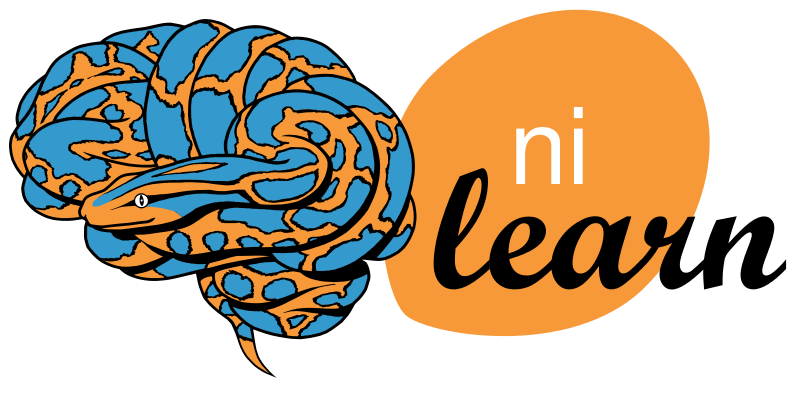Computing a connectome with sparse inverse covariance¶
This example constructs a functional connectome using the sparse inverse covariance.
We use the MSDL atlas
of functional regions in rest, and the
nilearn.input_data.NiftiMapsMasker to extract time series.
Note that the inverse covariance (or precision) contains values that can be linked to negated partial correlations, so we negated it for display.
As the MSDL atlas comes with (x, y, z) MNI coordinates for the different regions, we can visualize the matrix as a graph of interaction in a brain. To avoid having too dense a graph, we represent only the 20% edges with the highest values.
Python source code: plot_inverse_covariance_connectome.py
from nilearn import datasets
atlas = datasets.fetch_msdl_atlas()
atlas_filename = atlas['maps']
# Load the labels
import numpy as np
csv_filename = atlas['labels']
# The recfromcsv function can load a csv file
labels = np.recfromcsv(csv_filename)
names = labels['name']
from nilearn.input_data import NiftiMapsMasker
masker = NiftiMapsMasker(maps_img=atlas_filename, standardize=True,
memory='nilearn_cache', verbose=5)
data = datasets.fetch_adhd(n_subjects=1)
# print basic information on the dataset
print('First subject functional nifti images (4D) are at: %s' %
data.func[0]) # 4D data
time_series = masker.fit_transform(data.func[0],
confounds=data.confounds)
# Compute the sparse inverse covariance
from sklearn.covariance import GraphLassoCV
estimator = GraphLassoCV()
estimator.fit(time_series)
# Display the connectome matrix
from matplotlib import pyplot as plt
from nilearn import plotting
coords = np.vstack((labels['x'], labels['y'], labels['z'])).T
# Display the covariance
plt.figure(figsize=(10, 10))
plt.imshow(estimator.covariance_, interpolation="nearest",
vmax=1, vmin=-1, cmap=plt.cm.RdBu_r)
# And display the labels
x_ticks = plt.xticks(range(len(names)), names, rotation=90)
y_ticks = plt.yticks(range(len(names)), names)
plt.title('Covariance')
# And now display the corresponding graph
plotting.plot_connectome(estimator.covariance_, coords,
title='Covariance')
# Display the sparse inverse covariance (we negate it to get partial
# correlations)
plt.figure(figsize=(10, 10))
plt.imshow(-estimator.precision_, interpolation="nearest",
vmax=1, vmin=-1, cmap=plt.cm.RdBu_r)
# And display the labels
x_ticks = plt.xticks(range(len(names)), names, rotation=90)
y_ticks = plt.yticks(range(len(names)), names)
plt.title('Sparse inverse covariance')
# And now display the corresponding graph
plotting.plot_connectome(-estimator.precision_, coords,
title='Sparse inverse covariance')
plt.show()
Total running time of the example: 0.00 seconds ( 0 minutes 0.00 seconds)
